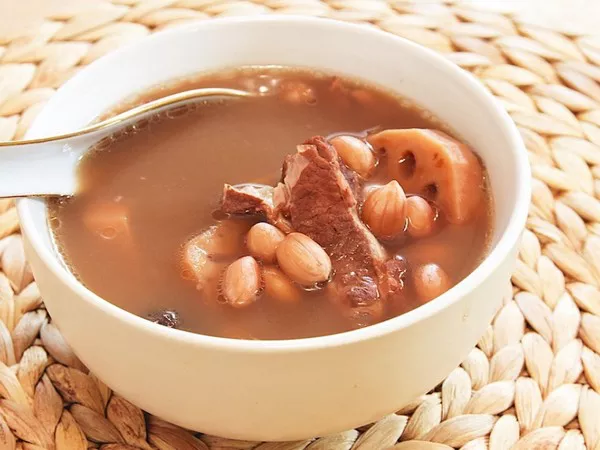China, with its rich cultural heritage and diverse regional influences, boasts a culinary tradition that is as vast as its landscape. When pondering the question of what constitutes the main food of China, one must embark on a journey through its provinces, cities, and villages to grasp the true essence of Chinese cuisine. The answer lies not in a single dish but in a mosaic of flavors, ingredients, and cooking techniques that have evolved over thousands of years.
Regional Diversity: A Tapestry of Flavors
To understand China’s main food, one must first appreciate its regional diversity. China is a vast country encompassing a multitude of climates, landscapes, and cultural traditions. This diversity is reflected in its cuisine, where distinct regional styles have emerged, each with its own signature dishes and flavor profiles.
Northern China: Wheat and Savory Delights
In the north, particularly in provinces like Shandong, Beijing, and Shanxi, wheat is a staple crop, and therefore, noodles and dumplings feature prominently in the local diet. Dishes such as Beijing roast duck (Peking duck), a symbol of Chinese culinary finesse, originate from this region. The northern cuisine is known for its robust flavors, often featuring hearty and savory dishes that are well-suited to the colder climate.
Eastern China: Seafood and Delicate Flavors
Moving eastward towards the coastal regions of Jiangsu, Zhejiang, and Shanghai, seafood becomes a central element of the cuisine. Delicacies like “drunken” crab and sweet and sour dishes showcase the freshness of ingredients and the subtle balance of sweet and savory flavors that characterize this region’s cooking.
Southern China: Rice and Dim Sum
In the south, particularly in Guangdong (Canton) and Fujian provinces, rice is the primary staple, and the cuisine is characterized by freshness, sweetness, and innovation. Dim sum, a style of small dishes often served with tea, is a highlight of Cantonese cuisine, featuring items like steamed dumplings, barbecue pork buns, and rice noodle rolls. Seafood, including abalone and shark fin, is highly prized in this region.
Western China: Spices and Noodles
The western provinces of Sichuan, Hunan, and Yunnan are known for their bold and spicy flavors. Sichuan cuisine, famous for its use of Sichuan peppercorns and fiery chili peppers, offers dishes like mapo tofu and kung pao chicken. Noodles, whether in soup or stir-fried, are popular throughout western China, reflecting the region’s diverse culinary influences from neighboring countries like India and Central Asia.
Common Elements: The Threads That Bind
Despite these regional differences, certain elements are shared across China’s culinary landscape, contributing to a unified culinary identity.
Rice and Noodles: The Essential Carbs
Rice and noodles serve as fundamental staples across China. While northern regions favor wheat-based noodles and dumplings, southern and eastern provinces predominantly consume rice. These versatile staples form the basis of countless dishes, from stir-fries to soups and steamed specialties.
Soy Sauce and Fermented Ingredients: Umami Enhancers
Soy sauce, fermented bean paste, and vinegar are ubiquitous in Chinese cuisine, providing depth and umami to dishes. Fermented ingredients like doufu (tofu) and pickled vegetables are also commonly used, adding complexity and tanginess to various regional specialties.
Aromatic Spices and Herbs: Flavors That Sing
Chinese cooking often relies on a combination of aromatic spices and herbs to elevate dishes. Star anise, ginger, garlic, and Sichuan peppercorns are just a few examples of ingredients that impart distinct flavors and aromas to different regional cuisines.
Balance and Harmony: Yin and Yang
Central to Chinese culinary philosophy is the concept of balancing flavors and textures. Sweet and sour, salty and spicy—these contrasts are meticulously balanced to create harmonious dishes that delight the palate.
Iconic Dishes: Culinary Masterpieces
While there is no singular “main food” of China, several iconic dishes have achieved global acclaim and are emblematic of Chinese culinary excellence.
1. Peking Duck (Beijing Kao Ya)
Originating from Beijing, Peking duck is prized for its crispy skin and succulent meat. Traditionally served with thin pancakes, sliced scallions, and hoisin sauce, this dish exemplifies the artistry of Chinese roasting techniques.
2. Mapo Tofu
Hailing from Sichuan province, mapo tofu is a spicy and flavorful dish featuring soft tofu cubes cooked in a fiery chili and bean-based sauce. The dish perfectly showcases the bold flavors and numbing heat characteristic of Sichuan cuisine.
3. Xiaolongbao (Soup Dumplings)
A specialty of Shanghai, xiaolongbao are delicate steamed dumplings filled with hot broth and savory pork. These dumplings require meticulous preparation and expert folding techniques to achieve the perfect balance of flavors and textures.
4. Dim Sum
Originating from the Cantonese tradition, dim sum refers to a wide array of small dishes served alongside tea. From steamed dumplings and rice rolls to crispy spring rolls and custard tarts, dim sum exemplifies the variety and intricacy of Cantonese cuisine.
Conclusion
In conclusion, attempting to pinpoint the main food of China is akin to capturing the essence of a kaleidoscope—ever-changing, diverse, and endlessly fascinating. Chinese cuisine is not defined by a single dish but by the collective culinary genius of its people, who have transformed humble ingredients into culinary masterpieces through centuries of innovation and tradition. To truly appreciate China’s main food is to embrace its regional diversity, savor its iconic dishes, and embark on a gastronomic journey that celebrates the rich tapestry of flavors, textures, and aromas that define Chinese cooking.
Related Topics:


























